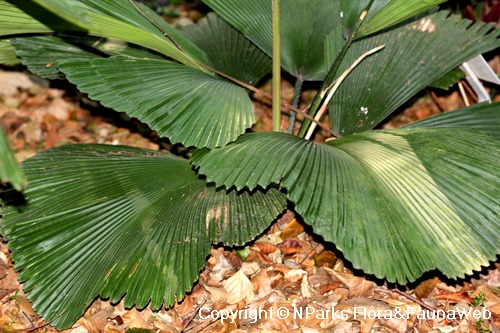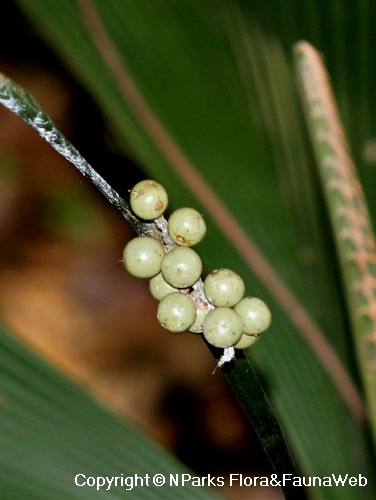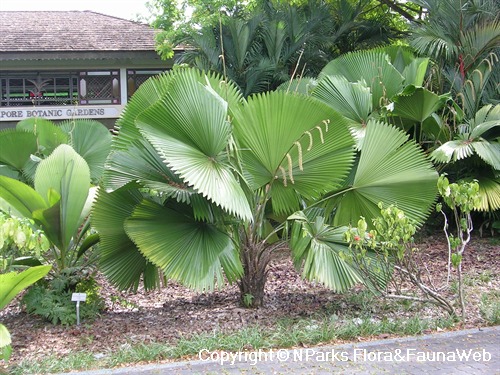
Back
Licuala orbicularis
| Family Name: | Arecaceae (Palmae) |
| Synonyms: | Licuala veitchii, Pritchardia grandis |
| Common Name: | Daun Nisang, Gereneh, Parasol Palm |
Name
Classifications and Characteristics
| Plant Division | Angiosperms (Flowering Seed Plants) (Monocotyledon) |
|---|---|
| Plant Growth Form | Palm (Solitary Habit) |
Biogeography
| Native Distribution | Sarawak, Borneo |
|---|---|
| Native Habitat | Terrestrial (Primary Rainforest, Secondary Rainforest) |
| Preferred Climate Zone | Tropical, Sub-Tropical / Monsoonal |
Description and Ethnobotany
| Foliage | Circular, undivided and pleated, up to 1.2m tall. Looks similar to Licuala grandis. Unlike L. grandis, it has no trunk。 |
|---|---|
| Habitat | Rainforest under-story palm, protected from direct sunlight, prefer high humidity and warm environment. |
| Ethnobotanical Uses | Others: Used as temporary umbrellas by native people. Very ornamental plant, the leaves are also used for flower arrangement. |
Landscaping Features
| Desirable Plant Features | Ornamental Foliage |
|---|---|
| Landscape Uses | Interiorscape/ Indoor Plant, General, Suitable for Roadsides, Parks & Gardens, Small Gardens, Shade Providing Tree / Palm, Container Planting |
Plant Care and Propagation
| Light Preference | Semi-Shade, Full Shade |
|---|---|
| Water Preference | Moderate Water |
| Plant Growth Rate | Slow |
| Rootzone Tolerance | Moist Soils, Well-Drained Soils, Acidic (low pH) Soils |
| Propagation Method | Seed, Division |
Foliar
| Mature Foliage Colour(s) | Green |
|---|---|
| Mature Foliage Texture(s) | Glossy / Shiny |
| Foliar Shape(s) | Palm Fronds (Fan / Costapalmate, Simple) |
| Foliar Apex - Tip | Rounded |
| Leaf Area Index (LAI) for Green Plot Ratio | 2.5 (Palm - Solitary) |
Fruit, Seed and Spore
| Mature Fruit Colour(s) | Orange, Red |
|---|---|
| Mature Fruit Texture(s) | Smooth, Glossy / Shiny |
| Mature Seed Colour(s) | Red |
| Mature Seed Texture(s) | Smooth, Glossy / Shiny |
Image Repository
Others
| Master ID | 1351 |
|---|---|
| Species ID | 5103 |
| Flora Disclaimer | The information in this website has been compiled from reliable sources, such as reference works on medicinal plants. It is not a substitute for medical advice or treatment and NParks does not purport to provide any medical advice. Readers should always consult his/her physician before using or consuming a plant for medicinal purposes. |







